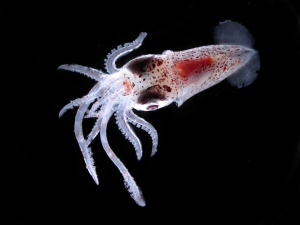Plankton species are a beautiful and fascinating group of organisms. We can’t wait to show you what we have seen of these diverse and elusive critters. Let us start from the beginning—the five W-questions:
What is plankton?
The word Plankton comes from the Greek word planktos meaning “wanderer” or “drifter”. They are a group of organisms that are too small or too fragile to swim against naturally occurring currents. Plankton inhabit both freshwater and marine environments, such as lakes, ponds, and oceans. Plankton can be broadly divided into two main groups: phytoplankton (plants) and zooplankton (animals). Phytoplankton are one of the primary producers in the ocean; like plants, they carry out photosynthesis to covert inorganic nutrients and light energy into organic material. Zooplankton, on the other hand, graze on phytoplankton or consume other zooplankton smaller than themselves. While you might think that plankton are too small to be seen by unaided eyes; that is not entirely true. Planktonic organisms have a very wide range in sizes. Many of them are microscopic in size; but others, like jellyfish, could grow up to more than one meter long.
Why do we study plankton?
Plankton are crucial to the marine ecosystem. As a group, plankton form the basis of many marine food webs in that they are an important food source to organisms ranging from larval fish to the largest animal on earth—the blue whale. In addition, plankton play an important role in nutrient cycling in the ocean; such as carbon and nitrogen cycle. Even humans are affected by plankton. As plankton are a food source for many marine organisms, our fishery industries depend highly upon these planktonic organisms as a source of fish productivity. Beyond being food, some plankton can also create problems to the fishing industry and even tourists visiting the shore when forming noxious blooms such as red tides.
How do we study plankton?
There are several ways to sample plankton: bottles, nets, acoustics, imaging systems, etc. Nets are the most common way of plankton sampling. Nets of different size, shape and design are used depending on the type of plankton of interest. A net is towed behind a moving vessel at the desired depth in order to collect and concentrate the planktonic organisms. When the net moves through the water column, plankton is retained in the net. One on board, the plankton ‘slurry’ is removed from the net and then (usually) preserved for later viewing and analysis under a microscope in the laboratory.
In this project, we sampled plankton by using a plankton imaging system – In Situ Ichthyoplankton Imaging System (ISIIS). ISIIS acts as a “virtual net” which captures the images of the organisms and information about their immediate surroundings. By sampling continuously, the result is a collection of digital images that record the exact location of the various planktonic organisms in relation to each other and the environment in which they live.
Where and when
The images currently shown in the Plankton Portal were taken in the Southern California Bight approximately 30 miles south of San Nicolas Island on October 15-17, 2010, on board the NOAA Ship Bell M. Shimada. But we are continuously traveling the world to bring new images and better understand how these little guys make a living in the ocean! ISIIS has also been towed in the Atlantic off of Georges Bank and Stellwagen Bank, MA, Straits of Florida, Gulf of Mexico, and recently off southern France in the Mediterranean.
This current project is to study the aggregation (patchiness) and distribution of different plankton in a small-scale front (where two different water masses meet) in the SCB. We want to know which organisms are present at the front (vs. those that may avoid it), and what they are doing there (e.g. are they prey or predators?). We need your help in identifying the organisms captured by ISIIS.

